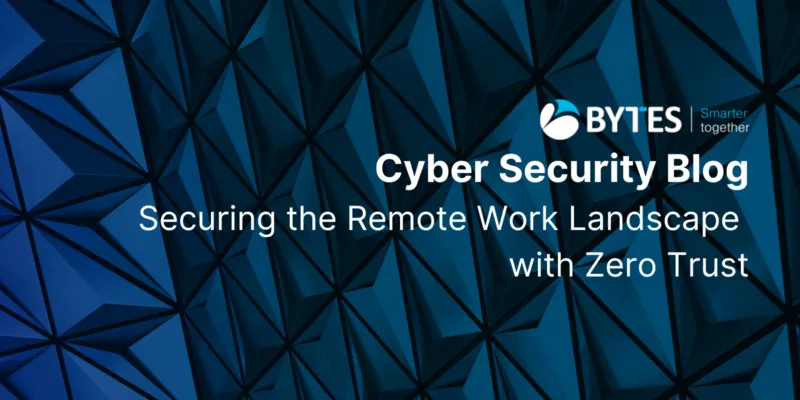Bytes Blog: Securing the Remote Work Landscape with Zero Trust

Monday 3rd April 2023
Writer: Gennaro Migliaccio, Contributor: Giuseppe Damiano, Editor: Daniela Miccardi
--------------------
Over the past three years, the world has gone through significant change. As a result, all businesses have had to rapidly adapt to become more dynamic and flexible.
Most organisations have, or are in the process of, transitioning to hybrid working, with increasing number of users still being allowed to work remotely. Whilst this change brought a breath of fresh air to the New Working World, it has also created a new set of challenges, whereby older security approaches no longer fit the modern working model.
In turn, the increased need for securing remote access to company data and resources has become a crucial subject for the board of directors, especially with the ever-evolving threat landscape.
The traditional security model based on protecting the network perimeter no longer provides viable or effective security against threats in today’s world where everything is mobile, and cloud based. The question then becomes: what works?
One answer is Zero Trust - a term that’s recently taken the spotlight. Zero Trust is a methodology that looks to shift our approach to implementing security to mitigate the overall risks associated with all aspect of the business, and particularly with remote working.
Zero Trust is a security model based on the assumption that everything (Users, Devices, Servers) attempting to access applications or data are untrusted until proven otherwise. It continually validates access even after it is granted.
Zero Trust provides businesses with a framework which enables a granular and contextual way of securing access to a company’s assets regardless of location. The overall result is a greater challenge for attackers to compromise users in settings such as remote working.
So how does Zero Trust help us with the security of remote workers?
One of the key benefits of Zero Trust is that it enables remote workers to securely access company data and resources from anywhere, using any device, yet it does so by applying strict security controls. These security controls are contextual and leverage multiple telemetry variables into account to continuously validate the user/device.
This is crucial in today’s remote work culture where employees need to be able to work from home or on the go, without compromising on security.
In summary, securing the remote work landscape today requires a new model which can adapt to and support the rise in remote working. We want our users to be able to work wherever they want, without compromise to security.
Zero Trust provides a comprehensive and dynamic approach to securing remote workers, that looks to shift away from the old concept of castles and moats and incorporates all aspects of security. By implementing a Zero Trust model, business can ensure their data and resources are secure, regardless of where users decide to work.
If you have any questions, or would like to learn more about any of the topics covered in this blog, please email our friendly team via [email protected].
Thank you for Reading.
Want to keep informed? Sign up to our Newsletter

